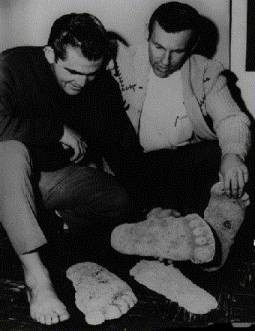
October 16, 2012
Here’s a bit of pondering in today’s flashback to some thoughts from April 2007, with some 2010 & 2012 updates:

Bob Gimlin and Roger Patterson, fieldworkers first, then Patterson an author second, here, look at Bigfoot casts.
Sometimes I do drift into trying to understand the “people” part of the Bigfoot quest.
In my Bigfoot! The True Story of Apes in America (2003), I wrote Chapter 15, “The Bigfooters” to detail my thoughts on the matter of the why and the what of the searchers. I added historical and people-specific notes to this matter in my more casual analysis of the folks “looking” for Bigfoot in The Field Guide of Bigfoot and Other Mystery Primates (1999; 2006), with Patrick Huyghe, and in Tom Slick: True Life Encounters in Cryptozoology (1989; 2002).
In Bigfoot!, I decided to continue with a delineation of the differences and similarities in the various types of people involved in the research and search, which has been noted by the late Grover Krantz and John Green. I did this so the general public would stop thinking there is just one kind of “seeker” out there.
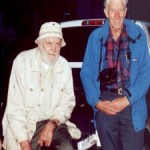
Grover Krantz, Ph. D. and John Green, academic and chronicler, defined a generation.
Frankly, although I didn’t write much then about this point, I think one of the large public misconceptions is a single type. Reinforced by the media, the thought is that the majority of seekers are of “one kind” of individual out there looking for Bigfoot – an amateur who has little or no training in science but is driven by passion and obsession to find the forest giants. Definitely the movies strengthened this myth, as demonstrated by the various “Bigfoot hunters” in Harry and the Hendersons.
In terms of field investigators, yes, most are what I lightheartedly and with all due respect call “weekend warriors.” These are mostly guys (males do dominate the field) who get their gear together (from nightscope vision to plaster of Paris) for what they consider serious searching from two days to two weeks. A few of these are outright jokers who only take a sleeping bag and beer, and say they are “Bigfoot hunting.” Thus, the newspapers love to have fun with “six-pack Joe” quotes from those kind of “Bigfooters.” Some of these “weekend warriors” are in local clubs who feel they will make a discovery which will assist the “search.”
Whether any of these people have any short-term or long-term impact is doubtful. There may be accidental discoveries by these folks of footprints or sightings, but will these people collect the material in a matter that will be acknowledged and recognized by science, by the zoologists and anthropologists who will “judge” the evidence? Will it be useful for pushing forward our knowledge of Bigfoot? Or will it end up in a pile of blobsquatch photos, shaky plaster casts, and dubious ear-witness evidence?

Jeff Meldrum, Ph. D., was handed the baton for academic Bigfootery, even before Krantz passed away, due to his frequent television appearances.
Certainly, for the real researchers and the more scientifically-based regional Bigfoot groups, lack of funding may be a factor, but context is another problem. How many of these group members are extending their passion without any grounding in zoology, anthropology, background research, or techniques in woodcraft? How many are able to acknowledge that Bigfoot ecotourism is foremost a social activity?
Ray Crowe was one of the first people whom I recall being totally honest with me that the Bigfoot groups serve the purpose as a new form of social interaction.
Indeed, if Bigfoot people would acknowledge the social and ecotourism dimensions of Bigfoot searching, the coming explosion in interest, funding, and potential to use this to the advantage of science could be more openly realized.

Rene Dahinden was the fieldworker the camera loved.
In a whole other collection of “Bigfooters,” there does appear to be more and more who are academically-oriented, but that does not mean they have more time for field investigations. This is not a criticism, but the pseudo-attempts to act as if they are field investigators by the media should probably end. There is nothing wrong with being an academic. Some filmmakers, nevertheless, stage the “professors” to show up in documentaries as if they spend their lives in the bush. They have a place in their labs and offices, doing the analysis, and there’s nothing wrong with that role.

John Bindernagel, Ph. D. brought more recognition to Jane Goodall’s pro-Bigfoot statements.

As far as I know, in a very Jane Goodall-like fashion, only Debbie Martyr (shown below) in Sumatra (in search of the Orang Pendek) has spent the last two decades directly in the jungle for most of her time out there. She continues to be one of the unsung heroes of the field – and no “weekend warrior” or “academic” will dethrone her.

The general public often forget the simple facts and history of animal collecting. Most new animals are found by local peoples, who serve as scouts and animal collectors for those that venture less frequently into the jungles and wild areas. Gone are the days of Victorian funding by zoos and museums to find new species. Most straightforward funding for cryptozoology is via documentary films and reality television programming today. That is a truth that few wish to confront. Smaller sources of cryptozoology funding come from writing.
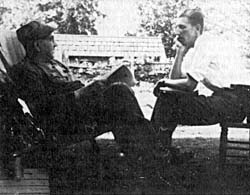

(1) John Green (right) interviews Albert Ostman; and (2) Rene Dahinden (right) interviews Ostman about Ostman’s 1924 Sasquatch abduction incident in British Columbia.
Meanwhile, some “Bigfooters” are “chroniclers,” those that write the books, articles, and today, the blogs, to keep the information flowing. It has something to do with a combination of background and age, I think. Some people start out doing fieldwork, and move into more chronicling. On the part of John Green, it was the reverse. He was a journalist who got interested in examining Sasquatch evidence in the field, secondary to his writing.
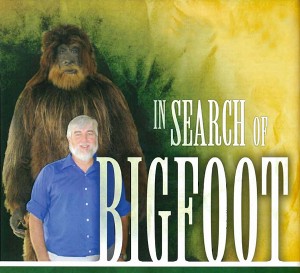
For myself, with a budding Yeti and Bigfoot interest long ago, and seeing that funding was always going to be low, I stayed in full-time social science and university research and teaching positions from 1967 until 1996, to support my cryptozoology research. Also, I decided since I lived in the USA, I should concentrate on North America. So, since 1960, I traveled to 49 states (not Alaska yet), to investigate sites, sightings, and situations regarding Sasquatch and Bigfoot. Naturally, slowly I became a more prolific writer as I was doing the field investigations, and thus I find myself today labeled a “chronicler” of such matters. But for me, of course, it felt like it was something I slowly drifted into, from fieldwork into writing (even though I did start writing in 1967). More authoring of books in the last decade seemed logical for me after I left the university sphere following my rock-climbing accident. The founding of the museum ten years ago to share, and appearing on television frequently were merely an educational extension of my “chronicling” and “fieldwork,” so to speak.
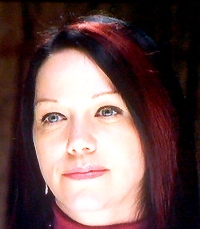
Anna Nekaris, Ph. d.
Besides gender diversity coming into the field, what other trends are occurring?

Anna-Marie Goddard, television personality.
A few good men and women are doing “cryptozoology,” and struggle to do it. But there is a darker side too, which has impacted the search in North America and, for example, in Malaysia.
There is a growing subculture of fake “Bigfooters” who want people to fund their “search” and what I think are their alleged scams. The most obvious are those who often get run out of town after people learn a little about them, but who are infrequently trying to sell people “views” of captured Bigfoot that never turn up and/or “memberships” in “expeditions” to the “subscribers.” The “expeditions” are nothing more than a day or two out in the local wooded lots or even well-known camping areas, but the general participants get to think they’ve been on a Bigfoot trek.
It is a shame and perhaps worse, but it really is a minority situation.
Actually, the variety of fringe people who get more publicity than the mainstream Bigfooters is quite vast. There’s the “Bigfoot contactees,” “pranksters,” “debunkers,” “paranormal seekers,” and “skeptics,” who all may call themselves “Bigfooters,” at one time or another. The press is more than happy to interview any of this vocal minority about the “real” state of Bigfoot affairs. But back to the darkside for a moment…those who seem to have the most dangerous influence with the media.
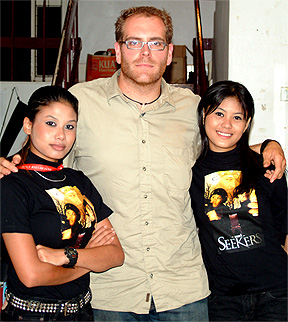
Josh Gates visited Malaysia in the midst of the “Johor Hominid” events, but was not involved in the actual hoaxing or discovering it. Instead, he is an example of how the media add programming without any insights to the investigations.
In Malaysia, I’m not sure what some of the people there were exactly thinking and doing – except at a distance – but the 2006-2007 episodes to “discover” a ‘hominid,” via what turned out to be hoaxed evidence, was a terrible set-back to Malaysia’s actual unknown hairy hominoid (perhaps even True Giant) research. Those events wiped away much of the feeling that “Bigfoot” was in Malaysia in the public’s eye, even though I understand there is a good basis of data that goes back historically for hairy hominoids in the jungles in South Asia. The folklore, reality, and good cases from treks of Harold Stephens in the 1970s to the locals’ 2004-2007 sightings are in danger of being forgotten due to the shady events that recently muddled the waters.
In a parallel of what happens in America, there’s a feud going on in Malaysia between the API and SPI, the Charles Goh camp vs the Ang-Chow camp. Some of this appears to have an ethnic undertone to it but, more importantly, this fight is not allowing the public to see through the trees to look clearly at the evidence that is a good foundation for the Malaysian Orang Dalam, Bigfoot, or whatever you want to call them. That’s the downside of having humans involved in any search for Bigfoot. Unfortunately we act so “human,” after a time, in the search and things get bogged down in personalities.
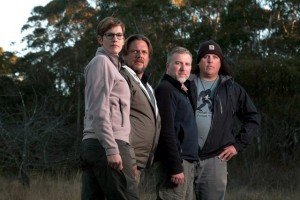
With the popularity of Animal Planet’s Finding Bigfoot and other programs, now we are entering an era of copycat “seeking Sasquatch” programming and people. Weekend cryptotourism is being developed and Bigfoot “hunts” are being planned and cryptotourists are paying for them. Reports of people staying in the woods, throwing rocks at campers and making hooting sounds, are starting to drift out of some of these “treks.”
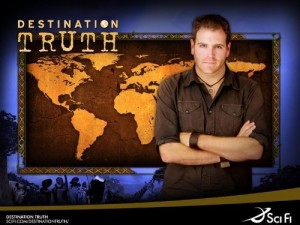
It will be interesting to see what tomorrow brings.
The upside is that most Bigfooters are decent people pursuing a mystery that we all are trying to solve together. Most Bigfooters, from “weekend warriors,” to “academics,” to “chroniclers,” are great people to know and are sincere in their quests, despite how they are portrayed in the press.
About Loren Coleman
Loren Coleman is one of the world’s leading cryptozoologists, some say “the” leading living cryptozoologist. Certainly, he is acknowledged as the current living American researcher and writer who has most popularized cryptozoology in the late 20th and early 21st centuries.
Starting his fieldwork and investigations in 1960, after traveling and trekking extensively in pursuit of cryptozoological mysteries, Coleman began writing to share his experiences in 1969. An honorary member of Ivan T. Sanderson’s Society for the Investigation of the Unexplained in the 1970s, Coleman has been bestowed with similar honorary memberships of the North Idaho College Cryptozoology Club in 1983, and in subsequent years, that of the British Columbia Scientific Cryptozoology Club, CryptoSafari International, and other international organizations. He was also a Life Member and Benefactor of the International Society of Cryptozoology (now-defunct).
Loren Coleman’s daily blog, as a member of the Cryptomundo Team, served as an ongoing avenue of communication for the ever-growing body of cryptozoo news from 2005 through 2013. He returned as an infrequent contributor beginning Halloween week of 2015.
Coleman is the founder in 2003, and current director of the International Cryptozoology Museum in Portland, Maine.
Filed under Bigfoot, Cryptomundo Exclusive, Cryptozoologists, Cryptozoology, Men in Cryptozoology, Sasquatch, Women in Cryptozoology, Year In Review